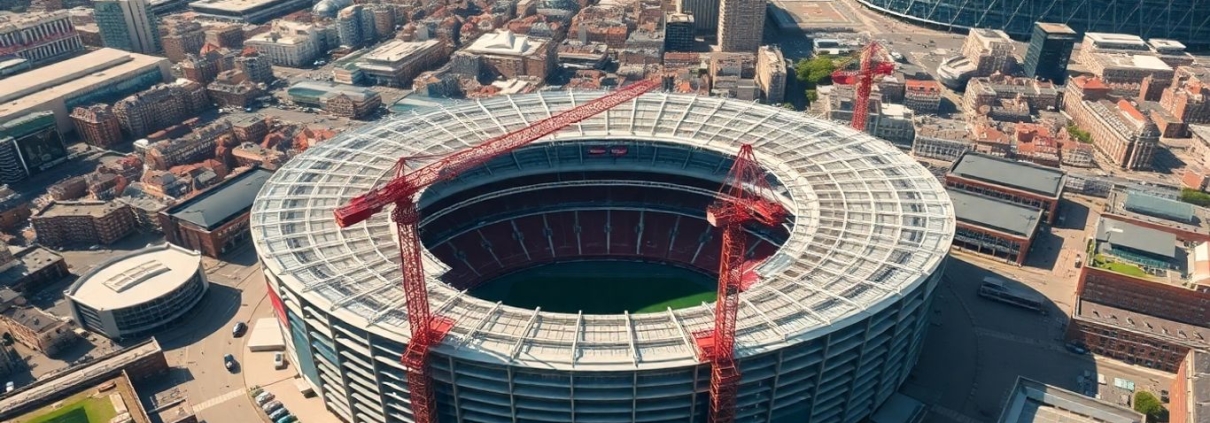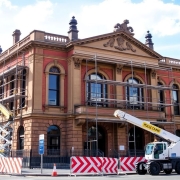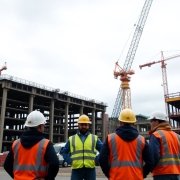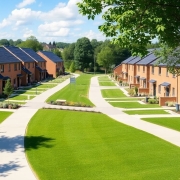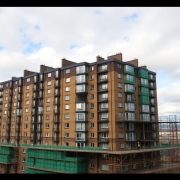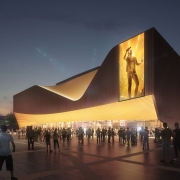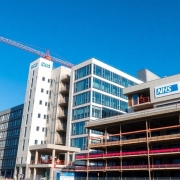Arsenal Lay Groundwork for 80,000-Seat Emirates: Ambitious Stadium Expansion Plans Revealed
Arsenal Football Club have initiated plans for a major redevelopment of Emirates Stadium, eyeing a dramatic increase in capacity to potentially up to 80,000 seats. With escalating demand from fans and a need to keep pace with rivals, the Gunners are exploring the biggest transformation in the club’s modern era.
Key Takeaways
- Arsenal are considering expanding Emirates Stadium to 80,000 seats
- Plans are at a preliminary stage, with various designs under review
- A major capacity boost would restore Emirates’ position as London’s largest club ground
- The project could cost around £500 million and may require a temporary relocation
Background: Why Emirates Expansion Now?
Since its 2006 opening, Emirates Stadium has boasted a capacity of just over 60,000. However, recent years have seen North London rivals Tottenham Hotspur open a larger modern ground, and West Ham’s London Stadium also surpass the Emirates’ size. With over 100,000 fans on Arsenal’s season ticket waiting list, the club’s owners have recognised the need for more seats and enhanced facilities, ensuring Arsenal remain competitive on and off the pitch.
Expected Benefits for Arsenal
A jump to a possible 80,000 seats would see Emirates return to the top of London’s football venues, overtaking both Tottenham and West Ham. The potential revenue gains from increased ticket and hospitality sales could be substantial, echoing the financial successes of recent stadium redevelopments at clubs like Real Madrid. This will support Arsenal’s ambitions domestically and in Europe while offering more fans the chance to experience matchdays.
Potential Designs and Construction Challenges
The Emirates’ current bowl shape was designed with future expansions in mind but still presents logistical hurdles. The redevelopment could involve adding seating tiers or redeveloping one end of the ground, subject to planning approval and overcoming the area’s space constraints, such as proximity to residential blocks and transport routes. Complexities may result in an extended construction period, reportedly costing up to £500 million.
Temporary Relocation and Timelines
As the plans are likely to disrupt matches, Arsenal may need a temporary home, with Wembley Stadium identified as the most probable substitute venue. However, the club must consider competition for Wembley from other teams like Chelsea, who are also exploring stadium upgrades. There is currently no definitive timeline, but construction is not expected to begin before the end of the 2026/27 season.
Fan Reactions and Board Leadership
Initial fan response has been largely enthusiastic, seeing the move as a statement of intent matching Arsenal’s on-field ambitions. The ownership group, guided by figures with significant real estate development experience, is involved from the start, indicating the seriousness of the project.
Emirates Stadium’s expansion promises to be a defining moment in Arsenal’s modern history, providing a legacy for future generations while reinforcing their presence among Europe’s elite both on and off the pitch.
Sources
- Arsenal consider Emirates Stadium expansion to 70,000 capacity | Arsenal, The Guardian.
- New Emirates Stadium capacity revealed as Arsenal plan major EXPANSION to club’s North London home: report |
FourFourTwo, FourFourTwo. - Arsenal Eyeing ‘Huge’ 80,000 Capacity Extension to Emirates Stadium, EPL Index.
- Inside Arsenal’s 80,000-seater new stadium plans to transform Emirates into Premier League’s biggest ground |
The Sun, The Sun. - Arsenal’s Emirates Stadium expansion: New capacity, design, timescale, FourFourTwo.

